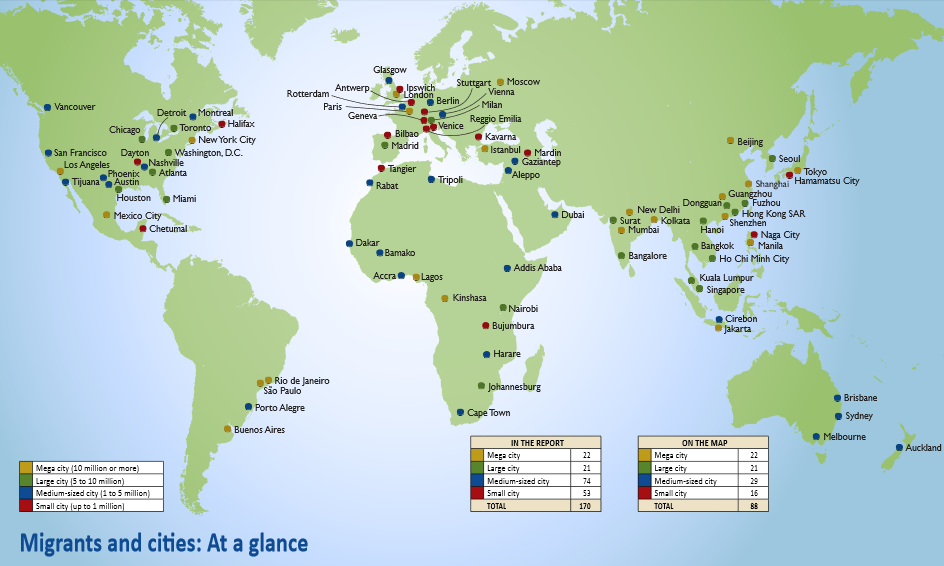Where are the global cities of the future?

Cyclists pass beneath the downtown skyline in Austin, Texas.
Image: REUTERS/Julia Robinson
Stay up to date:
Migration
Over 3 million new migrants arrive in towns and cities around the world every week. Right now, the urban population represents roughly 3.9 billion people and is expected to grow to 6.4 billion by 2050. The rapid growth of urban areas is nothing new, but the kind of cities that draw the most migrants is changing.
According to the World Migration Report 2015, almost one in five migrants live in a "gateway city" such as London, Sydney or New York, where migrants make up a third of the local population. The future of migration, however, will be mostly felt in emerging economies including South Africa, Brazil and India, and within East Asia.

"Global cities" are home to almost a fifth of all foreign-born citizens. They have traditionally been the city of choice for migrants because they are also the point of entry into national or regional labour markets. Dubai has the largest foreign-born population at 83%, while Brussels, at the heart of the European Union, has 62%.

Smaller is getting bigger
These global "mega cities" will continue to grow at an astonishing pace, but new, "secondary" cities are also becoming a popular choice among foreign-born migrants. The IOM defines a "secondary city" as one with "500,000 to 3 million inhabitants" which "may not be known outside its national or regional context."
As an example, cities such as New York, Los Angeles and Chicago have been traditional locations of choice for migrants. But recently, smaller low-cost cities such as Phoenix, Dallas and Houston have become popular, as have tech hubs such as Austin and Seattle.
Elsewhere in the world, the Italian provinces of Lazio or Lombardy have become popular alternatives to Rome and Milan.
The IOM cites numerous reasons for this shift, ranging from cost of living to the quality of transport, health services and education.
Migrant destinations are diversifying
While "secondary" cities become popular in the west, cities in East Asia, South Africa, Brazil and India are also seeing rapid increases in foreign-born populations.
In the Asia-Pacific region, an estimated 120,000 people are migrating to towns and cities daily. With that kind of movement, the number of people living in urban areas is expected to increase by 63% by 2050 in that region.
Africa has also seen a rapid increase in its urban population. In 1960, the only city in sub-Saharan Africa with a population of over 1 million people was Johannesburg. Ten years later, four cities had crossed this threshold. By 2010 that number had increased to 33 cities.

Don't miss any update on this topic
Create a free account and access your personalized content collection with our latest publications and analyses.
License and Republishing
World Economic Forum articles may be republished in accordance with the Creative Commons Attribution-NonCommercial-NoDerivatives 4.0 International Public License, and in accordance with our Terms of Use.
The views expressed in this article are those of the author alone and not the World Economic Forum.
Forum Stories newsletter
Bringing you weekly curated insights and analysis on the global issues that matter.